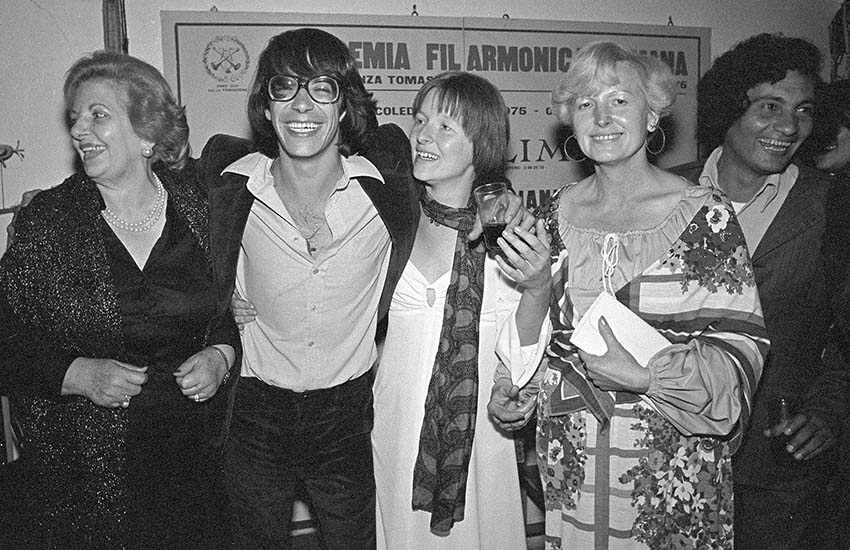With Valentine’s Day upon us, I thought to look into a question many foreign singles here ask:
“What is it like to have a relationship with a Mexican?”
Spoiler alert: it’s pretty similar to any other, but with a good dose of culture clash.
My goal was to contact Mexican-foreigner couples here in Mexico together for 10 years or more. There are many more than you might expect!
So, let’s start with dating. It is almost cliché to talk about beach hookups, but few of the respondents started as whirlwind romances.
Kiki Suárez came to Chiapas in the late 1970s, finding herself pregnant and married within six months, but she admits more than 35 years later that it was “crazy.”

Most couples met when one was working or studying abroad, either in Mexico or another country. Dating periods were most often at least a year, most taking their time, anticipating major life changes. Lawrence Statten and I both dated our respective initially reluctant husbands for over five years.
Mixed answers came with the question “Did dating prepare you for what was to come?”
“Nothing could have prepared us,” says Christie Olvera.
General issues — such as Mexicans’ sense of timeliness, personal space, tolerance for noise etc. — take on new dimensions with the start of a new household. What and when to eat is something that has to be sorted out. That can be difficult, according to Luis Alavez.
“There are many different flavors and ingredients in Mexico that my [Korean] wife was not used to,” he says.
Several non-Mexicans I interviewed noted the “weird” Mexican obsession with sugary drinks and tortillas with every meal, even meals heavy on carbs.
What language to use is an issue starting on the first date, but most respondents favored a bilingual model between Spanish and the foreign language, almost always English. This is because it is the foreigner’s native tongue or it’s the language that both learned in school. Children are almost always bilingual, either by osmosis or encouragement.
Depending on the generation and region, division of household chores can be an issue: Yves Laurent ironically notes that male partners can be more open-minded about such things than their female relatives. Sara Tyler agrees, stating, “Let’s just say [my husband] gets a fair amount of crap from his family, friends and even strangers.”
Interestingly, no one reported having problems with the Mexican partner’s family simply for being foreign. The Alavez-Lim family says that there is some staring and questioning, but “nothing out of what’s normal.”
Kathy Mulrenan Solorzano says that her father-in-law’s jaw dropped the first time he saw her, but that was because of her hippie dress.
One possible issue is that the foreign partner often needs support for many bureaucratic and economic interactions. Laura Martínez understands why she needs to intervene for her husband but admits it can get “wearisome.”
Last, but certainly not least, is the relationship with Mexican in-laws once the relationship has progressed far enough. Krystal Loverin and David Dennstedt claim that when you marry a Mexican, you marry their whole dang family!

The foreigner is often expected to adapt to the family’s — well — “idiosyncrasies.”
Boundary definitions in Mexico are different, at the very least, noted by Glenda Peroni and others. Mexican families can feel that they have the right to comment on the couple’s household, especially if there are children. The sources of childcare disputes can range from opinions on the danger of eating cold foods when sick to demanding a say in major medical and educational decisions.
Fortunately for Lawrence and his partner, José Luis, Mexican culture has become more accepting of homosexuals. Despite being in rural Ciudad Hidalgo, Michoacán, José Luis and Lawrence are accepted by family and community — but this sort of acceptance is not always guaranteed.
In long-term cross-cultural relationships, both sides need to find a way to support each other. The foreigner is dealing with culture clash, and the Mexican is dealing with the fallout. Flexible personalities are important; not all need be like Gail O’Brien, who finds that the Mexican culture suits her laid-back lifestyle.
Suárez and I believe that it is very helpful if both partners are not “stereotypically X” — neither of them fitting exactly into their native cultures. Helen Harper and others find that husbands willing to help with “women’s work” is a good sign. My husband Alejandro is a great cook, but his biggest virtue is patience.
Whether more foreign men or women chose to follow spouses to Mexico long-term is unclear. Ensenada-based David Dennstedt sees more foreign men, but here in Mexico City I see both evenly.
However, there is a Facebook group specifically for Women Surviving Rural Mexico, most of whom are U.S. women following deported husbands to their hometowns.
For the Mexican partner, that often comes about because his/her family of origin has a more international outlook. The family may have a history of immigration to or from Mexico, or they may have economic or other ties and experiences outside the country. Some couples, like Susan and Ramón Guerrero, have split their time together between the countries.
In the end, the Mexican/foreigner couple has “… find a way to come together…” like any other couple, says Suárez.
“Embracing the culture” and enjoying Mexico itself is important, says Kathy Mulrenan Solorzano. Both partners need to give the other space to be themselves, she adds. I agree, realizing there are times I need social circles where I can “be unreservedly gringo” from time to time.
But when it works, it works. According to Peter Stanziale, “I admit that a Mexican marriage and a Mexican life have been good for my patience and my arteries…”
Thanks to the many, many people who responded enthusiastically to my call for couples for this article, especially if your name does not appear!
Leigh Thelmadatter arrived in Mexico 18 years ago and fell in love with the land and the culture in particular its handcrafts and art. She is the author of Mexican Cartonería: Paper, Paste and Fiesta (Schiffer 2019). Her culture column appears regularly on Mexico News Daily.
